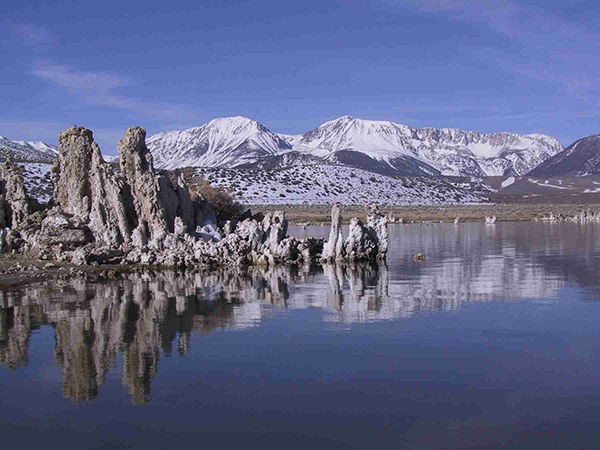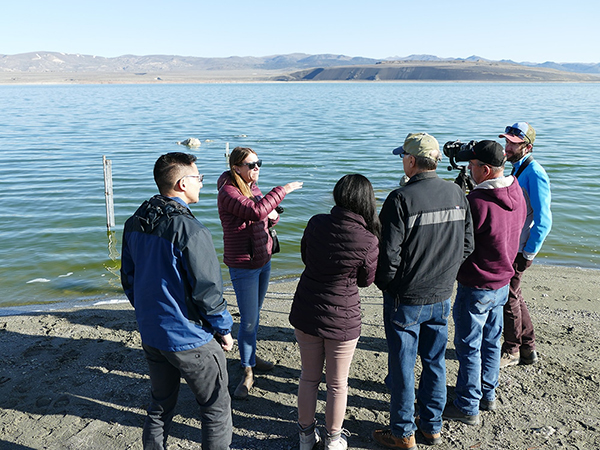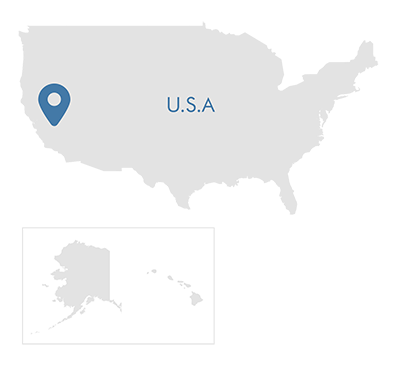UNITED STATES OF AMERICA, NORTH AMERICA
Mono Lake
Mono Lake and its surrounding watershed encompass a unique region in the transition between the Sierra Nevada Mountains and the Great Basin Desert, forming one of California's most productive ecosystems. It is located in the flat, 40-kilometer-wide high desert of California, almost 2.000 meters above sea level, east of the Sierra Nevada mountain range. Its surface area varies between 150 and 190 km², depending on the water level, and its average depth is 43 meters. As Mono Lake has no outlet, it is a soda lake, meaning that it is both particularly alkaline and particularly salty.
What makes it special
People know Mono Lake for the tufa towers, a unique geological formation. These limestone formations develop over centuries in the interaction of freshwater inflows with the lake's salty water.
Protection status
· State reserve- Mono Lake Tufa
· Protected landscape (IUCN Category V)

Biodiversity
As the Mono Lake is significantly saltier than the oceans, no fish live in it. However, small brine shrimps and large numbers of salt flies form the food source for many birds that rest here at Mono Lake on their migration to South America or the tropics. Scientists have observed over 100 bird species, such as American Avocets, Wedge-tailed Plovers, Black-throated Sandpipers and Black-necked Grebes. In late summer, thousands of Wilson’s Water Striders and Odin’s Grouse rest at Mono Lake. Even the California gull breeds at Mono Lake.

Threats
Mono Lake has faced environmental threats, mainly due to water diversions. The reduction in water flow to the lake, caused by diversions for urban and agricultural use, led to a significant drop in its water level. This not only exposed the tufa towers but also posed threats to the lake’s ecosystem, including the nesting habitat for migratory birds.

Our Work
The Mono Lake Committee in Lee Vining, the Living Lakes Californian partner organization, successfully managed to negotiate a compromise with the city of Los Angeles. In September 1994, an ordinance was passed to protect Mono Lake and its tributaries. Since then, the water level has risen continuously and the salt content has fallen accordingly.
Mono Lake Committee
www.monolake.org
info@monolake.org



